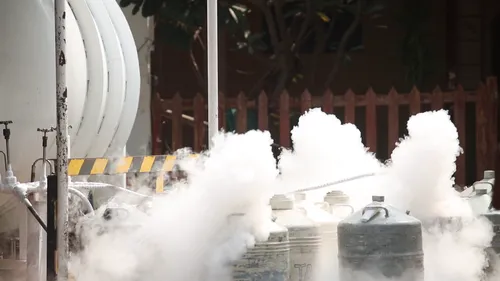What happens when liquid nitrogen is exposed to air?

- Rapid Boiling: Liquid nitrogen begins to boil rapidly due to the significant temperature difference between it and the ambient air.
- Condensation of Air Moisture: The cold nitrogen causes moisture in the air to condense, forming a visible cloud of fog.
- Cryogenic Freezing: Any objects or materials near the liquid nitrogen can freeze rapidly if they come into contact with it.
- Formation of Nitrogen Gas: As liquid nitrogen boils, it transitions from a liquid to a gas, significantly increasing in volume.
- Potential Frostbite Hazard: Direct exposure to liquid nitrogen can cause severe frostbite to skin and tissues due to its extremely low temperature.
- Oxygen Condensation: In some cases, the extreme cold can cause oxygen in the air to condense into a liquid form, which is a safety hazard due to its flammability.
- Pressure Build-up: In a confined space, the rapid expansion of nitrogen gas can lead to a dangerous build-up of pressure.
- Material Brittleness: Many materials become brittle and can shatter if exposed to liquid nitrogen due to thermal contraction.
- Inert Gas Displacement: The nitrogen gas can displace oxygen in the surrounding air, potentially leading to asphyxiation in poorly ventilated areas.
- Sound Effects: The rapid boiling and gas expansion can produce distinct hissing and bubbling sounds.
- Fog Formation: The fog created by condensing air moisture can spread and obscure visibility in the immediate area.
- Temperature Gradient: A temperature gradient is created, causing surrounding areas to become extremely cold.
- Vapor Plumes: Visible vapor plumes form as the nitrogen gas mixes with the warmer air.
Created by: Salasar Carbonics
Recommended





Comments